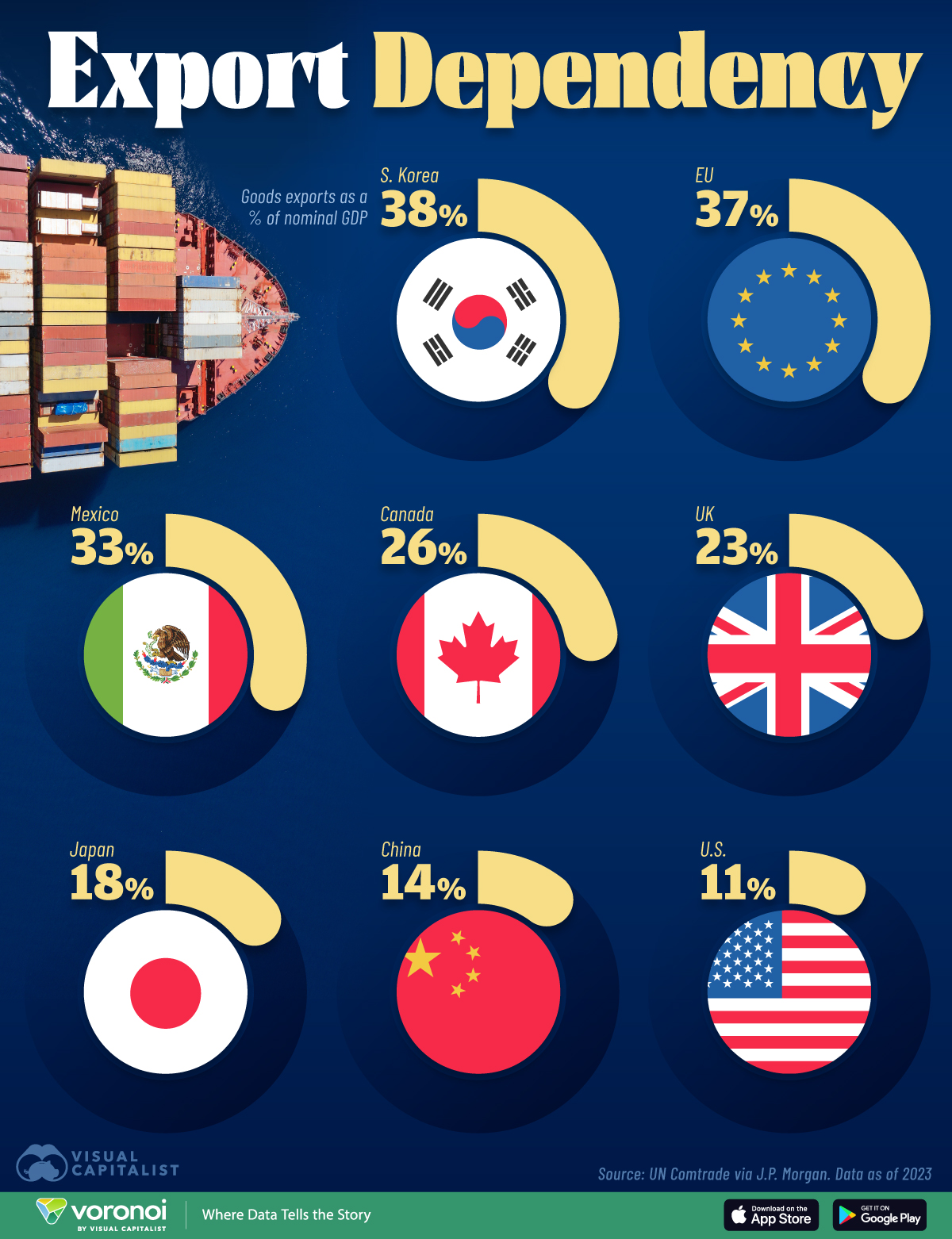Introduction
Visualcapitalist.com points out that “global trade is in a precarious situation with rising tensions from President Trump’s reciprocal tariffs announced in early April, some of which were subsequently paused for 90 days on April 9, 2025. These uncertainties can have far-reaching impacts, with trade flows playing a critical role in the GDP of several economies—especially those that are export-oriented. This infographic highlights the export dependency of major economies, measured by the share of goods exports in nominal GDP in 2023…”
“…South Korea’s export engine is fueled by semiconductors, automobiles, and petroleum. The European Union… member nations trade between each other (exporting within the EU) as well as externally….Mexico…and Canada are next…with the U.S. accounting for over 70% of their exports.
Meanwhile, China and the U.S. have the lowest export dependency among major economies, despite being the world’s two biggest goods exporters by value, respectively. The U.S. remains China’s top destination for exports, accounting for nearly 13% or $436 billion of Chinese exports in 2023.”
Conclusion
“Considering the uncertainty from these current events, the global trading system will likely see major shifts in 2025 as economies react to Trump’s foreign policy measures and work to establish new trade partners and correct trade imbalances.”

















